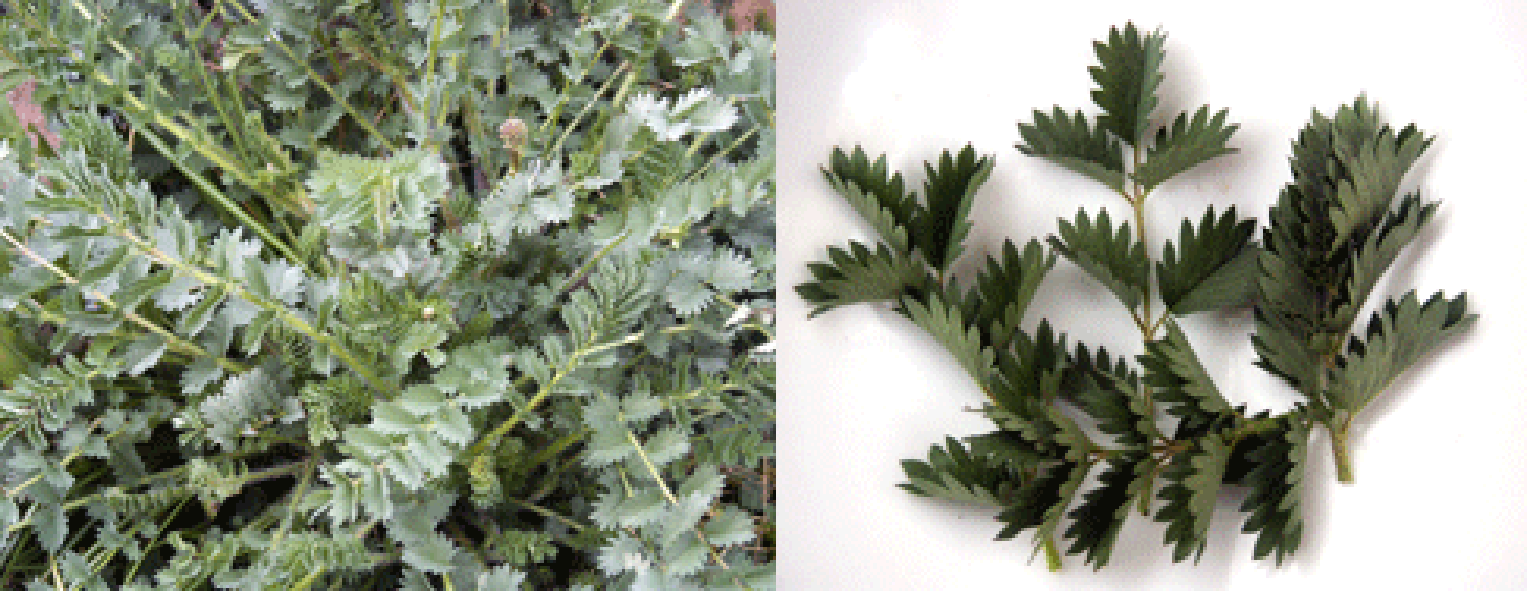 Salad Burnet
Sanguisorba
minor plant and
picked leaves..
Salad Burnet
Sanguisorba
minor plant and
picked leaves..
Welcome to the summary page for FabulousFusionFood's Herb guide to Salad Burnet along with all the Salad Burnet containing recipes presented on this site, with 0 recipes in total.
e This is a continuation of an entire series of pages that will, I hope, allow my visitors to better navigate this site. As well as displaying recipes by name, country and region of origin I am now planning a whole series of pages where recipes can be located by meal type and main ingredient. This page gives a listing of all the Cornish recipes added to this site.
These recipes, all contain Salad Burnet as a major herb flavouring.
Salad burnet, Sanguisorba minor (also known as Pimpernel, Garden burnet, Small burnet and Burnet) is a perennial herbaceous plant in the Rosaceae (rose) family. It is a native of western, central and southern Europe, northwest Africa and southwest Asia and grows to about 50cm tall. It is typically found in dry grassy meadows, often on limestone soils. It is drought tolerant, and grows all year around. The plant is many-branched with each branch bearing a number of opposed, pinnate, leaves that are composed of many small leaflets. From the centre of the plant develop flowering heads that bear dense heads of small pink flowers.
The English name salad burnet is composed of the descriptive 'salad', denoting the common use of the plant and the word 'burnet'. The origin of this word is from Middle English, being derived from the Old French brunete, burnete (a diminutive of brun, brown), denoting a brown cloth or a plant with brown flowers. Though the flowers of salad burnet are pink, they develop into seed heads that are brown and it is from these that the plant derives its name.
As the name suggests it is used most commonly used as an ingredients in salads and has a mild cucumber flavour. Typically the young leaves are used as more mature leaves tend to become bitter with age. Because of its cucumber notes it is also used as a herb in dressings and can be used in vinaigrettes or finely chopped to add to yoghurt in other dressings. It can also be used instead of mint in certain recipes (depending on the intended flavour) and is an excellent herb to use as an accompaniment with fish. The leaves are also sometimes included in bouquet garnis, particularly for fish and rabbit dishes. Salad burnet leaves also combine well with other herbs, particularly rosemary and tarragon and work in sauces for lamb and fish. If used to flavour casseroles and stews they should be added at the beginning of cooking.
Formerly, the leaves were used as a poultice to stop bleeding, hence the Latin genus name Sanguisorba (blood absorber).
e This is a continuation of an entire series of pages that will, I hope, allow my visitors to better navigate this site. As well as displaying recipes by name, country and region of origin I am now planning a whole series of pages where recipes can be located by meal type and main ingredient. This page gives a listing of all the Cornish recipes added to this site.
These recipes, all contain Salad Burnet as a major herb flavouring.
Salad burnet, Sanguisorba minor (also known as Pimpernel, Garden burnet, Small burnet and Burnet) is a perennial herbaceous plant in the Rosaceae (rose) family. It is a native of western, central and southern Europe, northwest Africa and southwest Asia and grows to about 50cm tall. It is typically found in dry grassy meadows, often on limestone soils. It is drought tolerant, and grows all year around. The plant is many-branched with each branch bearing a number of opposed, pinnate, leaves that are composed of many small leaflets. From the centre of the plant develop flowering heads that bear dense heads of small pink flowers.
The English name salad burnet is composed of the descriptive 'salad', denoting the common use of the plant and the word 'burnet'. The origin of this word is from Middle English, being derived from the Old French brunete, burnete (a diminutive of brun, brown), denoting a brown cloth or a plant with brown flowers. Though the flowers of salad burnet are pink, they develop into seed heads that are brown and it is from these that the plant derives its name.
As the name suggests it is used most commonly used as an ingredients in salads and has a mild cucumber flavour. Typically the young leaves are used as more mature leaves tend to become bitter with age. Because of its cucumber notes it is also used as a herb in dressings and can be used in vinaigrettes or finely chopped to add to yoghurt in other dressings. It can also be used instead of mint in certain recipes (depending on the intended flavour) and is an excellent herb to use as an accompaniment with fish. The leaves are also sometimes included in bouquet garnis, particularly for fish and rabbit dishes. Salad burnet leaves also combine well with other herbs, particularly rosemary and tarragon and work in sauces for lamb and fish. If used to flavour casseroles and stews they should be added at the beginning of cooking.
Formerly, the leaves were used as a poultice to stop bleeding, hence the Latin genus name Sanguisorba (blood absorber).
The alphabetical list of all Salad Burnet recipes on this site follows, (limited to 100 recipes per page). There are 0 recipes in total:
Page 1 of 1
Page 1 of 1